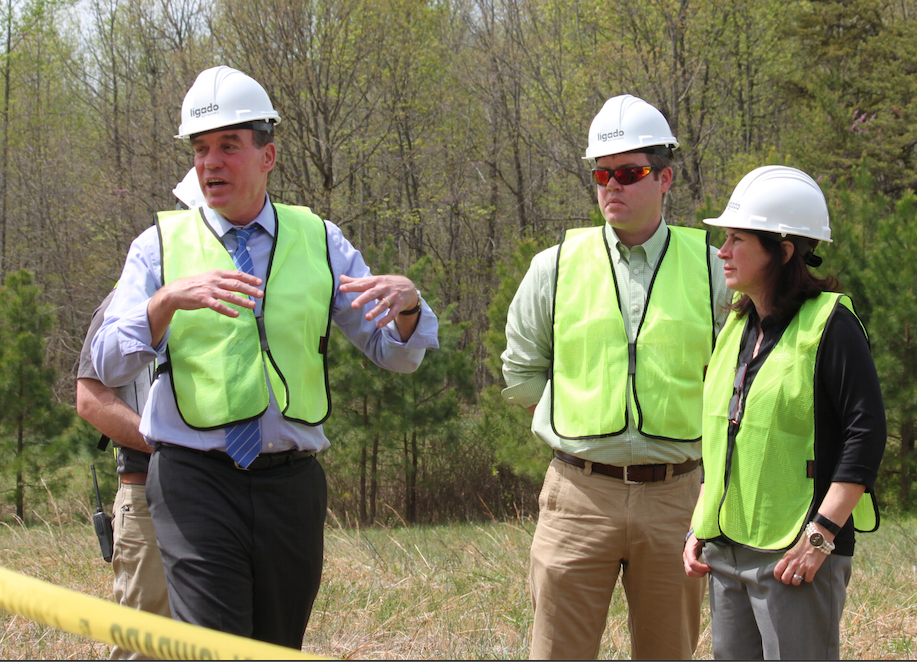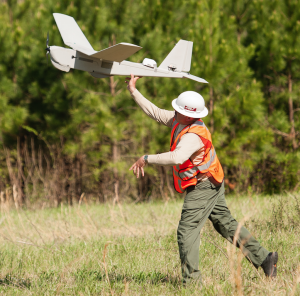Warner makes visit for drone test
Published 10:06 am Tuesday, April 25, 2017

- MARK BLANKS | VIRGINIA TECH U.S. Sen. Mark Warner, left, stands with Nicholas Devereux, Ligado CTO Tamara Case and Dominion Virginia Power’s Steve Eisenrauch, right. The April 12 demonstration in Buckingham showcased the drone’s ability to capture visuals miles away from the operator’s line of sight.
Democratic U.S. Sen. Mark Warner, with Dominion’s Electric Transmission team, Ligato Communications, Virginia Tech and aircraft manufacturer AeroVironment, took part in a demonstration in Buckingham County April 12 near Physic Springs showing how an aerial drone examines area power lines.
The AeroVironment Puma AE UAS inspected Dominion Virginia Power’s high voltage power lines at distances up to 20 kilometers, or nearly 12 and a half miles from the drone’s operators, said Janell Hancock, senior communications specialist with Dominion Virginia Power.
The demonstration, done with permission by the Federal Aviation Administration, meant to show how an operator could remain stationary and send the drone several miles away without losing line of sight, Hancock said.

MARK BLANKS | VIRGINIA TECH
Jonathan Scott, of AeroVironment PIC, launches the Puma UAV during an April 12 demonstration of the drone in Buckingham County. The event was attended by U.S. Sen. Mark Warner.
Also present for the demonstration were Tamara Casey, chief technology officer for Dominion’s Ligado Networks, Mark Blanks, director of Virginia Tech’s Mid-Atlantic aviation partnership and Steve Eisenrauch, Dominion’s manager of transmission line services.
The demonstration, in addition to examining the power lines, collected data on Ligado’s SkyTerra 1 satellite system, observing the system’s reliability and availability.
Ligado plans to deploy a satellite and ground-based network, which would deliver greater performance for the 5G and lnternet of Things (IoT) markets and help some of the line of sight range limitations currently held by the drones in use, Hancock said.
Dominion began the UAV (unmanned aerial vehicle) pilot program two years ago, using drones to inspect high-voltage transmission lines where access to towers can be difficult, Hancock said. The decision to use the UAV program has saved time and money, Hancock said, inspecting more than 200 miles of transmission lines at more than 2,000 structures since August 2015.





